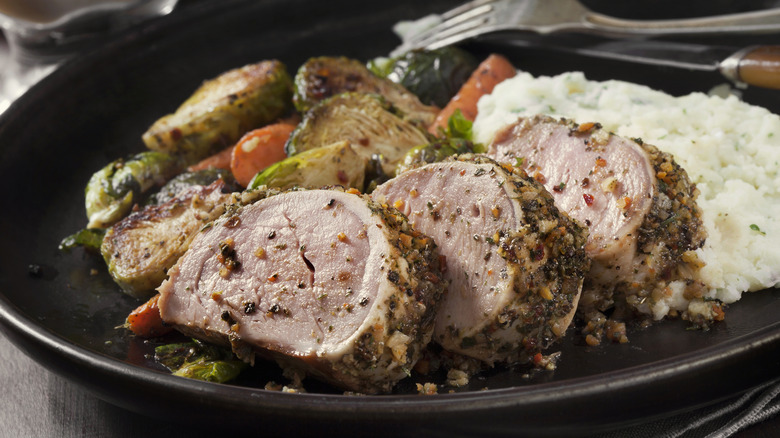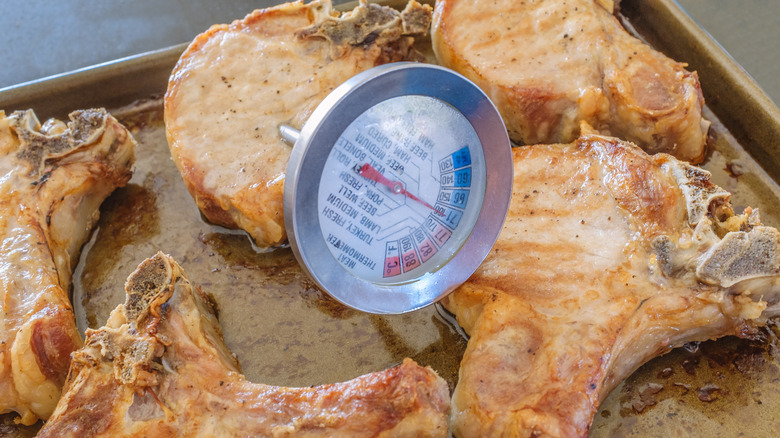Is Pork Safe To Eat When It's Still Pink In The Middle?
Safety First is always the best motto to abide by when it comes to cooking meat since food-borne parasites are no joke. While pink (and in some cases, even raw) steak can be okay to eat due to the fact that beef is one of the most parasite-free of meat sources, pink chicken is often seen as a warning sign that the bird hasn't been heated to the point where salmonella bacteria no longer pose a threat. Pork, however, holds somewhat of a middle ground. While eating raw pork is still a no-no, the USDA now considers it safe to eat when it's medium-rare and still shows some pink inside.
As of 2011, the USDA revised its former guidelines regarding pork, recommending that this meat could now be cooked to just 145 F and still be perfectly safe to eat. Prior to this point, it called for pork to be cooked to an internal temperature of 160 F, at which point the meat would be gray inside and have a fairly dry texture. The reason for this change is that pigs these days eat better than they did once upon a time. This means that swine suffering from Trichinella worm infestations are rare and a trichinosis diagnosis is no longer seen as the inevitable outcome of pigging out on partially pink pork products.
Safe swine cooking 101
So what's considered best practice in culinary swine safety today? For one thing, you need to ditch the notion that meat color is any indication that it's safe to eat. Even chicken that's no longer pink can be undercooked, and pork, pink or otherwise, is unwise to consume if the internal temperature's too low. It needs to reach at least 137 F in order to kill off any bacterial infestation but letting it cook to the full 145 F as per USDA guidelines will still result in meat that's tender, juicy, and altogether accolade-worthy (insert your own additional adjectives here if you must).
Needless to say, unless you're the meat whisperer, you'll need to invest in a meat thermometer in order to determine when the proper temperature has been reached. Sure, you can go for one with all the bells and whistles if you have money (but not meat) to burn, but a no-frills low-budget model will also do the job.
We'd be remiss not to mention a few more caveats regarding these new (as of 2011) pork guidelines. For one thing, you're advised to let the meat rest for three minutes after taking it out of the oven since the internal heat will continue to rise and work its bacteria-killing magic. For another, the temperature change doesn't apply to ground meat. This means that sausage patties or pork burgers will still need to be cooked to 160 F in order to be safe to eat.

